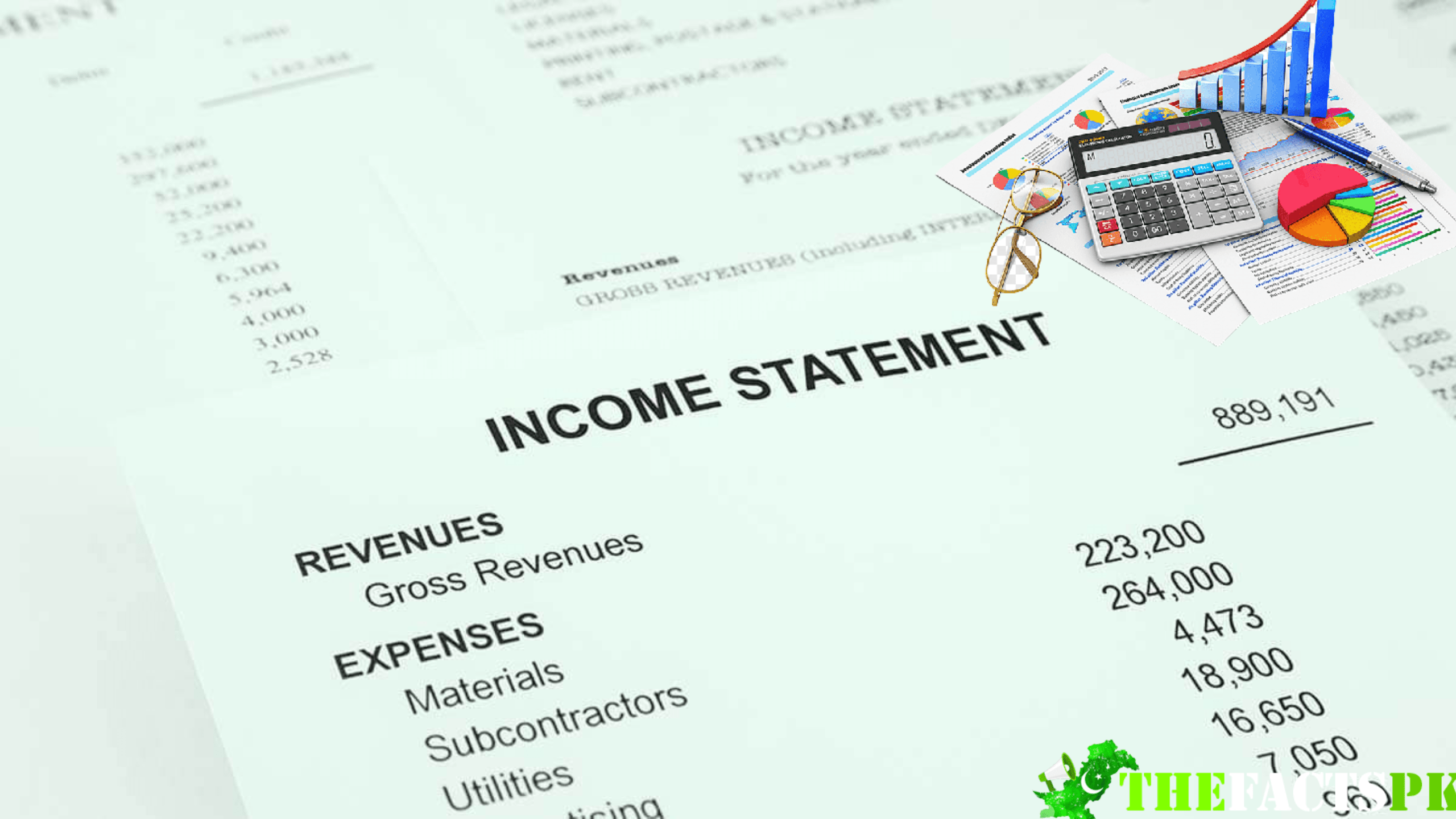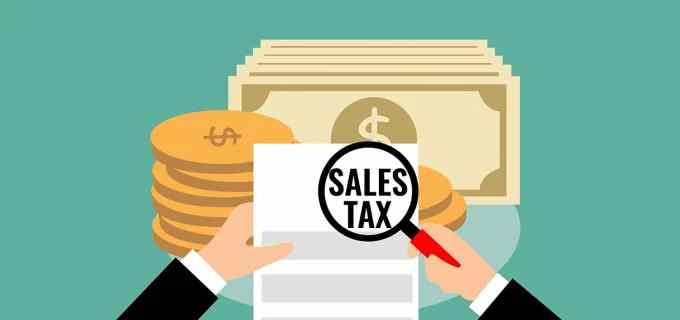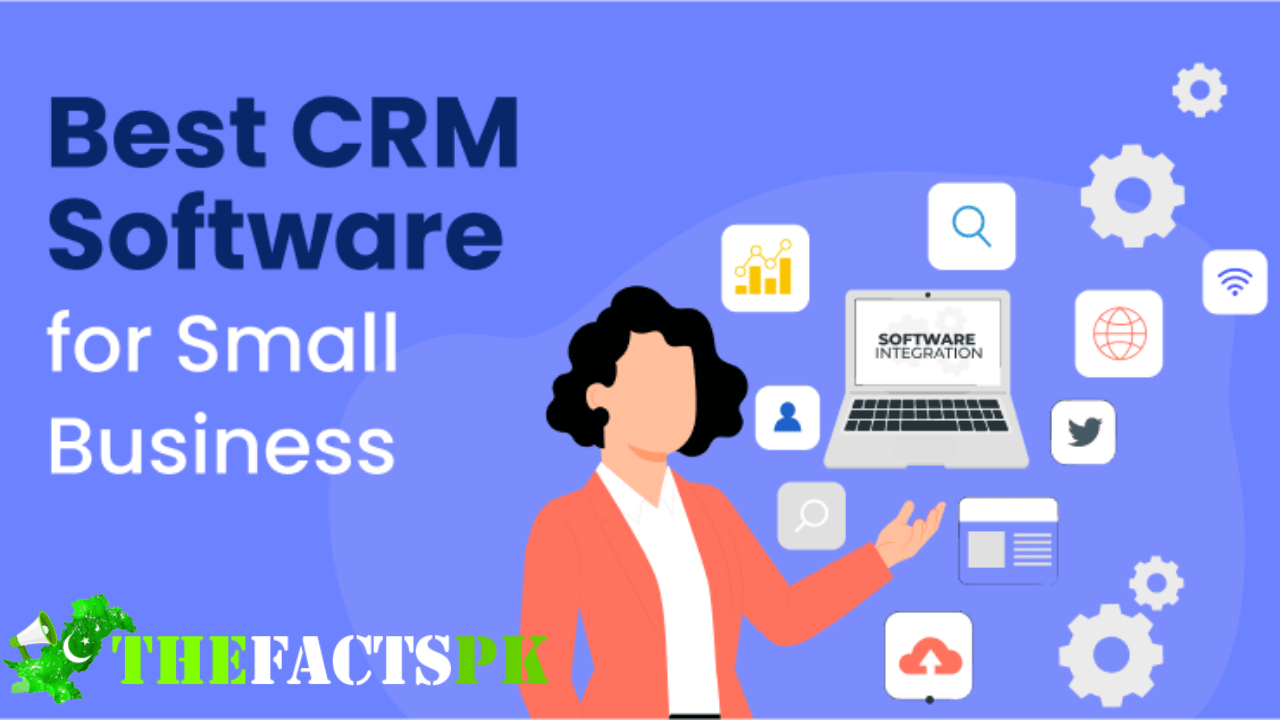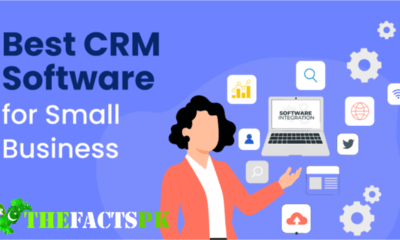Finance
The Importance of the Income Statement in Financial Analysis

- Income Statement
- Performance Evaluation:
- Profitability Assessment:
- Trend Analysis:
- Investment Decisions:
- Industry Benchmarking:
- Decision-Making:
- Financial Forecasting:
- Expense Analysis:
- Financial Health Assessment:
- Cash Flow Analysis:
- Investor Communication:
- Regulatory Compliance:
- Performance Comparisons:
- Stakeholder Decision-making:
- Valuation and Investment Analysis:
- Management Performance Evaluation:
- Business Planning and Strategy:
Income Statement
The income statement plays a crucial role in financial analysis as it provides valuable insights into a company’s financial performance and profitability. Here is a brief note highlighting the importance of the income statement in financial analysis:
Income statement expenses can also be presented by the nature or function of the expense. It has a heading of company name, statement title and reporting time period.
Income statement expenses can also be presented by the nature or function of the expense. It has a heading of company name, statement title and reporting time period.
A Traders | |||
Income Statement | |||
For the Year Ended December 2023 | |||
PARTICULARS | ($) | ($) | |
Revenue | |||
Sale |
40,250 | ||
Profit Received on Investments |
780 | ||
Total Revenue |
41,030 | ||
Less: Operating Expenses | |||
Salaries to staff |
10,500 | ||
Supplies expense |
5,625 | ||
Water & electricity charges |
2,200 | ||
Communication charges |
2,500 | ||
Travelling & Conveyance |
1,560 | ||
Printing & stationery |
4,000 |
26,385 | |
Operating income | |||
Net Income |
14,645 | ||
Performance Evaluation:
The income statement allows stakeholders to evaluate a company’s financial performance over a specific period. It provides a summary of revenues, expenses, gains, and losses, enabling a comprehensive assessment of the company’s ability to generate profits.
Profitability Assessment:
By analyzing the income statement, investors, creditors, and analysts can determine the company’s profitability and assess its ability to generate sustainable earnings. Key metrics such as gross profit margin, operating profit margin, and net profit margin can be derived from the income statement to measure profitability.
Trend Analysis:
Comparing income statements across different periods allows for trend analysis. By observing changes in revenue, expenses, and profitability over time, stakeholders can identify patterns and make informed decisions based on the company’s performance trajectory.
Investment Decisions:
Investors use the income statements to evaluate the attractiveness of an investment opportunity. By assessing the company’s revenue growth, expense management, and profitability ratios, investors can gauge the potential return on investment and make informed decisions about buying or selling shares.
Industry Benchmarking:
The income statement provides a basis for industry benchmarking and comparison. By analyzing similar companies within the industry, stakeholders can identify outliers and assess how a company performs relative to its competitors.
Decision-Making:
The income statement helps management in decision-making processes. By understanding revenue sources, cost structures, and expense patterns, management can identify areas for improvement, optimize resource allocation, and implement effective strategies to enhance profitability.
Financial Forecasting:
The income statement is a valuable tool for financial forecasting. By projecting future revenues and expenses based on historical data and market trends, stakeholders can estimate future profitability and make strategic plans accordingly.
| what is accounting and finance | Link Click Here |
| Credit and Debit in Accounting | Link Click Here |
| Mastering Accounting for E-commerce | Link Click Here |
| Accounting Software | Link Click Here |
| Accounting Careers | Link Click Here |
| Use of Accounting in Daily Life | Link Click Here |
Expense Analysis:
The income statement breaks down various expense categories, such as cost of goods sold, operating expenses, and interest expenses. This helps identify areas where costs can be controlled or reduced, leading to improved profitability.
Financial Health Assessment:
The income statement, along with other financial statements, helps assess the overall financial health and stability of a company. It provides insights into the company’s ability to cover expenses, generate profits, and meet its financial obligations.
Cash Flow Analysis:
The income statement indirectly impacts cash flow analysis by indicating the company’s revenue and expense trends. By understanding the relationship between net income and cash flow from operating activities, stakeholders can evaluate the company’s cash-generating capabilities.
Investor Communication:
The income statement serves as a means of communication between a company and its investors. It helps shareholders understand the financial performance and profitability of the business, influencing their investment decisions and perceptions about the company’s value.
Regulatory Compliance:
The income statements is a necessary component for fulfilling regulatory requirements and financial reporting standards. It ensures transparency and accountability in financial reporting, facilitating compliance with legal and regulatory obligations.
Performance Comparisons:
The income statement enables performance comparisons between different companies within the same industry or across different periods. This helps identify trends, benchmark performance, and make informed decisions based on relative financial performance.
Stakeholder Decision-making:
The income statement provides valuable information to stakeholders such as lenders, suppliers, and customers. Lenders assess the company’s profitability and ability to repay debts, while suppliers and customers evaluate its financial stability and reliability.
Valuation and Investment Analysis:
The income statement is a critical component in valuation models and investment analysis. Analysts use it to calculate financial ratios, such as price-to-earnings ratio (P/E ratio), which helps assess the company’s valuation and attractiveness as an investment opportunity.
Management Performance Evaluation:
The income statements allows for the evaluation of management’s performance in achieving revenue growth, expense control, and profitability targets. It provides a basis for incentive plans, performance reviews, and decision-making related to compensation and bonuses.
Business Planning and Strategy:
The income statement serves as a guide for business planning and strategy development. It helps set realistic revenue targets, identify areas for cost optimization, and align financial goals with overall business objectives.
By leveraging the information provided by the income statements, stakeholders can gain a comprehensive understanding of a company’s financial performance, profitability, and overall financial well-being. It serves as a valuable tool for decision-making, strategic planning, and evaluating the effectiveness of financial management practices.
In summary, the income statements is of paramount importance in financial analysis as it provides a comprehensive view of a company’s financial performance and profitability. It aids in performance evaluation, profitability assessment, trend analysis, investment decisions, industry benchmarking, decision-making, and financial forecasting. By analyzing the income statements, stakeholders can gain valuable insights that drive informed decision-making and contribute to the overall financial success of a company.
Finance
Sales Tax Calculator for all Countries

The Sales Tax Calculator can compute any one of the following, given inputs for the remaining two: before-tax price, sale tax rate, and final, or after-tax price.
Sales Tax Calculator
Enter the values below and click “Calculate”.
%

What is Sales Tax/Sales Tax Calculator?
A sales tax is a consumption tax paid to a government on the sale of certain goods and services. Usually, the vendor collects the sales tax from the consumer as the consumer makes a purchase. In most countries, the sales tax is called value-added tax (VAT) or goods and services tax (GST), which is a different form of consumption tax. In some countries, the listed prices for goods and services are the before-tax value, and a sales tax is only applied during the purchase. In other countries, the listed prices are the final after-tax values, which include the sales tax.
Sales Tax Calculator
The Sales Tax Calculator can compute any one of the following, given inputs for the remaining two: before-tax price, sale tax rate, and final, or after-tax price.
What is Sales Tax?
A sales tax is a consumption tax paid to a government on the sale of certain goods and services. Usually, the vendor collects the sales tax from the consumer as the consumer makes a purchase. In most countries, the sales tax is called value-added tax (VAT) or goods and services tax (GST), which is a different form of consumption tax. In some countries, the listed prices for goods and services are the before-tax value, and a sales tax is only applied during the purchase. In other countries, the listed prices are the final after-tax values, which include the sales tax.
U.S. Sales Tax
In the United States, sales tax at the federal level does not exist. At the state level, all (including District of Columbia, Puerto Rico, and Guam) but five states do not have statewide sales tax. These are Alaska, Delaware, Montana, New Hampshire, and Oregon. States that impose a sales tax have different rates, and even within states, local or city sales taxes can come into play. Unlike VAT (which is not imposed in the U.S.), sales tax is only enforced on retail purchases; most transactions of goods or services between businesses are not subject to sales tax.
Sales tax rate ranges
The sales tax rate ranges from 0% to 16% depending on the state and the type of good or service, and all states differ in their enforcement of sales tax. In Texas, prescription medicine and food seeds are exempt from taxation. Vermont has a 6% general sales tax, but an additional 10% tax is added to purchases of alcoholic drinks that are immediately consumed. These are only several examples of differences in taxation in different jurisdictions. Rules and regulations regarding sales tax vary widely from state to state.
On average, the impact of sales tax on Americans is about 2 percent of their personal income. Sales tax provides nearly one-third of state government revenue and is second only to the income tax in terms of importance as a source of revenue. Reliance on the sales tax varies widely by state. Sales taxes are much more important in the south and west than they are in New England and the industrial Midwest. Florida, Washington, Tennessee, and Texas all generate more than 50 percent of their tax revenue from the sales tax, and several of these states raise nearly 60 percent of their tax revenue from the sales tax. New York, on the other hand, only raises about 20 percent of its revenues from the sales tax.
The following is an overview of the sales tax rates for different states.
| State | General State Sales Tax | Max Tax Rate with Local/City Sale Tax |
| Pakistan | 18% | 25% wide range of goods Import |
| Alabama | 4% | 13.50% |
| Alaska | 0% | 7% |
| Arizona | 5.60% | 10.73% |
| Arkansas | 6.50% | 11.63% |
| California | 7.25% | 10.50% |
| Colorado | 2.90% | 10% |
| Connecticut | 6.35% | 6.35% |
| Delaware | 0% | 0% |
| District of Columbia | 6% | 6% |
| Florida | 6% | 7.50% |
| Georgia | 4% | 8% |
| Guam | 4% | 4% |
| Hawaii | 4.17% | 4.71% |
| Idaho | 6% | 8.50% |
| Illinois | 6.25% | 10.25% |
| Indiana | 7% | 7% |
| Iowa | 6% | 7% |
| Kansas | 6.50% | 11.50% |
| Kentucky | 6% | 6% |
| Louisiana | 4.45% | 11.45% |
| Maine | 5.50% | 5.50% |
| Maryland | 6% | 6% |
| Massachusetts | 6.25% | 6.25% |
| Michigan | 6% | 6% |
| Minnesota | 6.88% | 7.88% |
| Mississippi | 7% | 7.25% |
| Missouri | 4.23% | 10.85% |
| Montana | 0% | 0% |
| Nebraska | 5.50% | 7.50% |
| Nevada | 6.85% | 8.25% |
| New Hampshire | 0% | 0% |
| New Jersey | 6.63% | 12.63% |
| New Mexico | 5.13% | 8.69% |
| New York | 4% | 8.88% |
| North Carolina | 4.75% | 7.50% |
| North Dakota | 5% | 8% |
| Ohio | 5.75% | 8% |
| Oklahoma | 4.50% | 11% |
| Oregon | 0% | 0% |
| Pennsylvania | 6% | 8% |
| Puerto Rico | 10.50% | 11.50% |
| Rhode Island | 7% | 7% |
| South Carolina | 6% | 9% |
| South Dakota | 4% | 6% |
| Tennessee | 7% | 9.75% |
| Texas | 6.25% | 8.25% |
| Utah | 5.95% | 8.35% |
| Vermont | 6% | 7% |
| Virginia | 5.30% | 6% |
| Washington | 6.50% | 10.40% |
| West Virginia | 6% | 7% |
| Wisconsin | 5% | 6.75% |
| Wyoming | 4% | 6% |
Pakistan History of Sales Tax
Sales tax was declared a federal subject in 1948 through the enactment of General Sales Tax Act, 1948 and in 1952, this levy was transferred permanently to the Central Government. Sales tax was levied at the standard rate of 6 pies per rupee at every stage whenever a sale was effected. More Detail Here
U.S. History of Sales Tax
When the U.S. was still a British colony in the 18th century, the English King imposed a sales tax on various items on the American colonists, even though they had no representation in the British government. This taxation without representation, among other things, resulted in the Boston Tea Party. This, together with other events, led to the American Revolution. Therefore, the birth of the U.S. had partly to do with the controversy over a sales tax! Since then, sales tax has had a rocky history in the U.S. and this is perhaps why there has never been a federal sales tax. Some of the earlier attempts at sales tax raised a lot of problems. Sales tax didn't take off until the Great Depression, when state governments were having difficulty finding ways to raise revenue successfully. Of the many different methods tested, sales tax prevailed because economic policy in the 1930s centered around selling goods. Mississippi was the first in 1930, and it quickly was adopted across the nation. Today, sales tax is imposed in most states as a necessary and generally effective means to raise revenue for state and local governments.
How to Deduct Sales Tax in the U.S.?
When filing federal income tax, taxpayers need to choose to either take the standard deduction or itemize deductions. This decision will be different for everyone, but most Americans choose the standard deduction. Sales tax can be deducted from federal income tax only if deductions are itemized. In general, taxpayers with sales tax as their only deductible expense may find that itemizing deductions is not worth the time. Itemizing deductions also involves meticulous record-keeping and can be tedious work because the IRS requires the submission of sales tax records, such as a year's worth of purchase receipts. Anyone who plans to itemize should be keeping detailed records, as it will be very helpful in determining the amount of sales tax paid.
After the choice between standard or itemized deductions has been made, taxpayers have to make another decision regarding whether or not to claim either state and local income taxes or sales taxes (but not both). Most taxpayers choose to deduct income taxes as it typically results in a larger figure. With that said, it may be better for taxpayers who made large purchases during the year to deduct sales tax instead of income tax if their total sales tax payments exceed state income tax. Taxpayers who paid for a new car, wedding, engagement ring, vacation, or multiple major appliances during a tax year can potentially have a greater sales tax payment than income tax payment. In reality, less than 2% of Americans claim sales tax as a deduction each year.
For more information about or to do calculations involving income tax, please visit the Income Tax Calculator.
Value-Added Tax (VAT)
VAT is the version of sales tax commonly used outside of the U.S. in over 160 countries. VAT is an indirect tax that is imposed at different stages of the production of goods and services, whenever value is added. Countries that impose a VAT can also impose it on imported and exported goods. All participants in a supply chain, such as wholesalers, distributors, suppliers, manufacturers, and retailers, will usually need to pay VAT, not just the end consumer, as is done with U.S. sales tax. VAT can be calculated as the sales price minus the costs of materials or parts used that have been taxed already.
VAT as compared
A 1979 study published by the Tax Foundation offered some insight into arguments for or against VAT as compared to sales tax. Perhaps the greatest benefit of taxation via VAT is that because taxation applies at every step of the chain of production of a good, tax evasion becomes difficult. Also, there are stronger incentives to control costs when all participants involved in a supply chain are taxed. Compared to sales tax, VAT has the ability to raise more revenue at a given rate. On the other hand, VAT tends to be regressive; that is, it takes proportionately greater amounts from those with lower incomes. Also, the cascading tax is harmful to new and marginal business activities, likely to set off inflationary tendencies, and is detrimental to exports.
Goods and Services Tax (GST)
The Goods and Services Tax (GST) is similar to VAT. It is an indirect sales tax applied to certain goods and services at multiple instances in a supply chain. Taxations across multiple countries that impose either a "GST" or "VAT" are so vastly different that neither word can properly define them. The countries that define their "sales tax" as a GST are Spain, Greece, India, Pakistan, Canada, Singapore, and Malaysia.
Finance
How to become rich in 2024

How to become rich in 2024 is most Search topic now but Keep in mind that economic landscapes can change anytime, so always be cautious and seek up-to-date advice from reliable sources.
Becoming rich in 2024 requires a blend of financial literacy, astute investment decisions, and consistent effort. Cultivate a growth mindset, seek new income streams, minimize debt, save diligently, and make informed investments. Leverage networking to seize opportunities, stay adaptable, and remember that wealth is often a gradual outcome of prudent choices and perseverance.
Timeless Principles for Building Wealth:
Financial Education how to become rich in 2024:
Continuously educate yourself about personal finance, investing, and money management. This knowledge forms the foundation of wise financial decisions. image From here

Smart Budgeting:
Create and stick to a budget that prioritizes saving and investing. This helps you control your spending and channel your resources toward wealth-building activities.
Invest Wisely:
Understand different investment options such as stocks, real estate, mutual funds, and more. Diversify your investments to manage risk and take advantage of potential growth.
Entrepreneurship:
Starting a business or side hustle can provide additional income streams and potentially lead to substantial wealth. Identify market needs and create value-driven solutions.
Long-Term Thinking:
Wealth accumulation is often a gradual process. Patience and consistent efforts over time tend to yield better results than seeking quick fixes.
Networking:
Building strong professional relationships can open doors to opportunities, partnerships, and insights that contribute to financial growth.
Adaptability:
Be willing to adapt to changing circumstances and seize emerging opportunities. The ability to adjust your strategies based on market trends is crucial.
Avoid Debt Traps:
Be cautious with debt and high-interest loans, as they can hinder your wealth-building efforts. Prioritize paying off high-interest debts and use credit wisely.
Continuous Improvement:
Invest in your skills and knowledge. Continuous self-improvement can lead to higher earning potential and career advancement.
As for the “best” education, there isn’t a one-size-fits-all answer. The best education depends on your goals, interests, and the field you want to pursue. Here are a few points to consider:
Relevance:
Choose education that aligns with your career aspirations. Research the industry requirements and job prospects before making a decision.
Quality Institutions:
Look for well-established and reputable institutions that offer recognized degrees or certifications in your chosen field.
Skill Development:
Consider programs that focus on practical skills and real-world applications. Hands-on experience can often be more valuable than theoretical knowledge alone.
Networking Opportunities:
Some educational paths provide better networking opportunities, which can be crucial for career growth and business connections.
Affordability:
Take into account the cost of education and the potential return on investment. Avoid excessive student loan debt that could hamper your financial future.
Online Learning:
In the digital age, online courses and programs can provide flexible, cost-effective education options.
Life-Long Learning:
The pursuit of education shouldn’t stop after obtaining a degree. Continuous learning and staying updated with industry trends are essential.
Remember
Remember that education is just one aspect of wealth-building. Practical application, experience, and a willingness to learn and adapt are equally important. It’s also essential to define what “rich” means to you – financial success can take different forms based on individual values and goals.
Finance
Best CRM software for small || business

For most businesses, the primary objective is growth, whether it’s increasing revenue, expanding the customer base, or both. However, achieving business growth in the modern world heavily relies on fostering strong customer relationships. After all, building a good rapport with your customers is essential for securing repeat business.
The Best CRM Software for Small Businesses
Zoho CRM: Best for startups
Monday.com: Best for teams
Zendesk Sell: Best for customer support
Insightly: Best for project management
FreshSales: Best for lead management
Salesforce: Most comprehensive customer relationship management (CRM) platform
Pipedrive: Best for simplicity
This is where Customer Relationship Management (CRM) software comes into play. An effective CRM platform is crucial for small and medium-sized businesses (SMBs) to prepare for future growth and events. These platforms offer a wide range of invaluable features, such as automating outreach emails and analyzing the current sales pipeline.
Among the leading CRM platforms available for businesses, Pipedrive stands out and even provides a free trial for new users. By utilizing Pipedrive, you can easily make phone calls, monitor business emails and text messages, and efficiently manage client relationships, customer interactions, and growth projections.
Why are Customer Relationship Management Tools Essential for Startups?
Running an established business is challenging enough, but entrepreneurs embarking on new ventures face an even more daunting task. In many cases, they are essentially building an airplane while flying it. Implementing a customer relationship management tool can significantly improve workflow efficiency by centralizing tasks and allowing business owners to focus on strategic decision-making. It enables startups to establish strong client relationships from the beginning, giving them a competitive edge. Additionally, utilizing CRM tools helps track progress and performance.
Pipedrive’s startup CRM incorporates best practices that empower new businesses to succeed. These practices encompass effective customer communication, sales pipeline management, and staff training resources. Furthermore, Pipedrive’s comprehensive reports make it easier to predict future outcomes and offer optimization suggestions tailored to your company’s specific needs, enhancing overall efficiency. The platform also enables you to send follow-up messages, delegate assignments, schedule appointments, and generate requests.
Pipedrive assists startup enterprises in managing their contacts by converting spreadsheets and business cards into actionable intelligence. By creating a unique CRM pipeline customized to your startup’s requirements, preferences, and goals, you can adapt your processes accordingly. For instance, forecasting future events is beneficial for most companies, and Pipedrive’s informative reports and knowledge graph support startups in their future planning endeavors.
With CRMs, you gain a holistic view of the sales life cycle, identifying any bottlenecks or points of failure. Armed with this comprehensive perspective, you can make intelligent data-driven decisions to propel your organization forward.
How Do CRMs Work for Startups?
As we all know, business processes like client communication and promotion can be time-consuming. DashThis, for instance, adopted and automated Pipedrive’s data collection, resulting in faster customer service. Furthermore, automated planning, board management, and targeted project execution are vital for their outreach team’s daily agenda.
Pipedrive’s intuitive user interface empowers seamless integration and adaptability. The CRM provides a strong foundation for effective data management and analysis, enhancing deal interactions due to its user-friendly nature. With the appropriate CRM in place, you can deliver exceptional customer service, execute successful marketing campaigns, and optimize your sales pipeline.
Pipedrive’s data management, reporting, and business analysis tools unveil best practices that help you close more deals. With the right CRM solution, you can deliver outstanding customer service, effectively manage product advertising platforms, and ultimately enhance your company’s sales pipeline.
Sales Automation for Startup CRMs
Sales automation software is a valuable asset for startups as it assists sales representatives in tracking prospecting efforts, outreach activities, and interactions with existing leads. CRMs provide a centralized data repository essential for sales success, enabling sales reps to easily track personal and deal-related activities. As salespeople gather information about leads, including details about their company and industry, they can utilize the sales automation features of the CRM to generate personalized outreach plans tailored to each company. Sales automation software helps salespersons uncover best practices and common objections specific to the industry they are targeting.





















